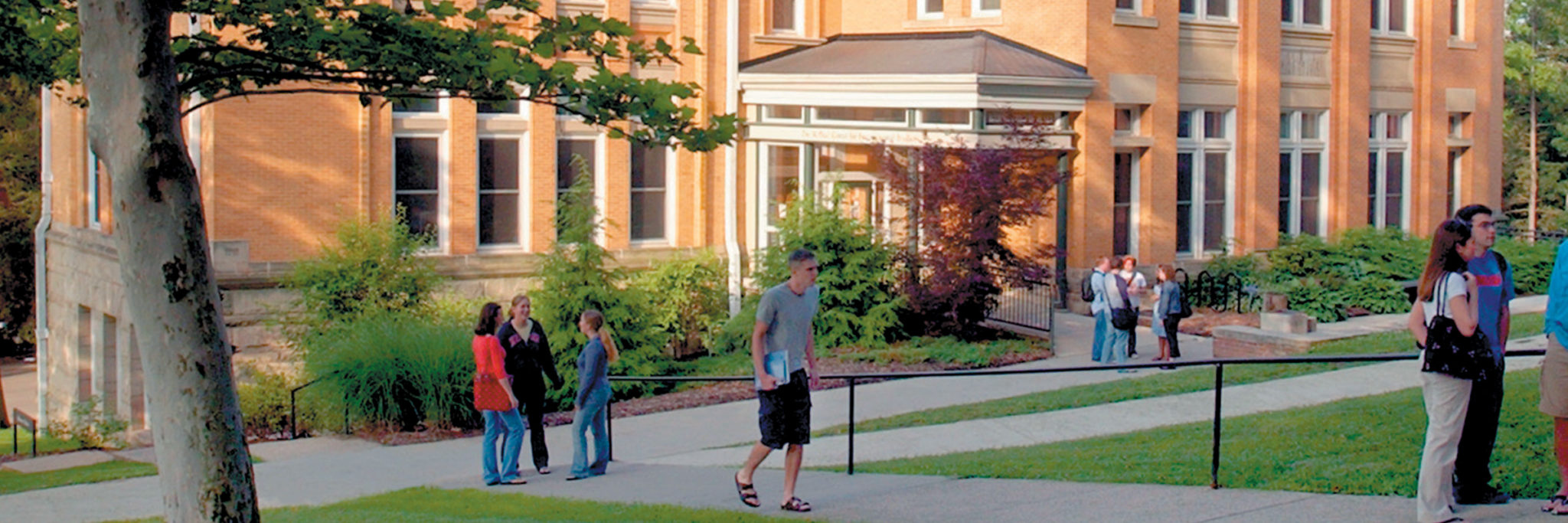Operating a campus with minimal environmental impact is dif?cult to pull off in the 21st century, even though many institutions might aspire to it. Let’s face it: to do so requires significant investment, and we all know what that would do to tuition. Art Chonko, Denison’s physical plant director, is one of the college’s most fervent proponents of environmentally friendly practices. While he’ll quickly admit that the Big Red campus isn’t thoroughly “green,” the college has taken significant strides to that end. Here are some of the examples he outlined for us:
• In 2004, with the aid of student volunteer efforts and a grant from the Coshocton-Fairfield-Licking-Perry Solid Waste District, the college opened a new $113,000 recycling center. The center is available for use by the entire Granville community, and Denison has institutionalized recycling pick-up with its Building Services staff. In essence, we now collect and recycle a lot of paper, cardboard, glass, and plastic that used to go into the trash.
• We recycle wood pallets and most metals discarded during operations, maintenance, and construction.
• This summer we will install pollution-control equipment at the heating plant that will reduce emissions and increase ef?ciency.
• We continue to install highefficiency lighting and electronic ballasts, and we recover all PCB ballasts. As time and money permit, across campus we are replacing all of the lights that use mercury. Once we complete that project, we will look at replacing other existing mercury-using devices such as thermostats, relays, etc.
• At the end of each academic year, we find uses in the community for materials like furniture, small appliances, and school and of?ce supplies, most of which are left behind by students when they move out, and all of which used to be thrown away.
• Barney-Davis Hall is cleaned with only natural products.
• The college chose Herman Miller as its primary office furniture supplier because of its sustainable approach to the use of new and recycled materials.
• The college chose Herman Miller as its primary office furniture supplier because of its sustainable approach to the use of new and recycled materials.
• We use recycled content carpet in many cases and are investigating carpet recycling (although we continue to find that such programs are not readily available or economically feasible).
• We use low-VOC (volatile organic compounds) paints whenever possible.
• We make sure that all new construction projects employ environmentally friendly methods such as natural lighting, energy efficient systems, low-VOC paints and glues, low-impact finishes, air lock entry-ways, and screened windows for ventilation.
• We limit use of pesticides and herbicides as much as possible, and we’re starting to use organic fertilizers.
• We collect spring water and roof downspout water for irrigation on the Academic Quad, the Campus Common, and the Drag, and Ebaugh Pond water for the soccer field. It doesn’t provide all that we need but it offsets a lot of village water.
The Wish List
And what would Chonko do if he had the time, staff, or funding to make Denison a few shades greener? Well, for starters, he would…
• Use only cleaning products or processes that do not involve harmful chemicals.
• Use only cleaning products or processes that do not involve harmful chemicals.
• Expand recycling to include items such as batteries, carpet, and construction debris.
• Buy more recycled-content products such as parking blocks, paper, etc.
• Initiate more aggressive energy efficiency and water conservation projects [for instance, turning off unused lights—which is a safety issue in some cases—and letting grass turn brown in the summer—which would, no doubt, reduce the campus’s appeal to visiting prospective students].
Denison University conducted its first “green renovation” in 1998 with the makeover of historic Barney-Davis Hall, now home to the Environmental Studies and English departments. The project involved a concerted effort to restore, not replace, as much of the initial craftsmanship and material as possible, while employing new materials from recycled or eco-friendly sources. Other key elements included a non-toxic policy and wiring for a soon-to-be-installed solar energy system. Learn more about the Barney-Davis renovation at www.denison.edu/enviro/barney.

